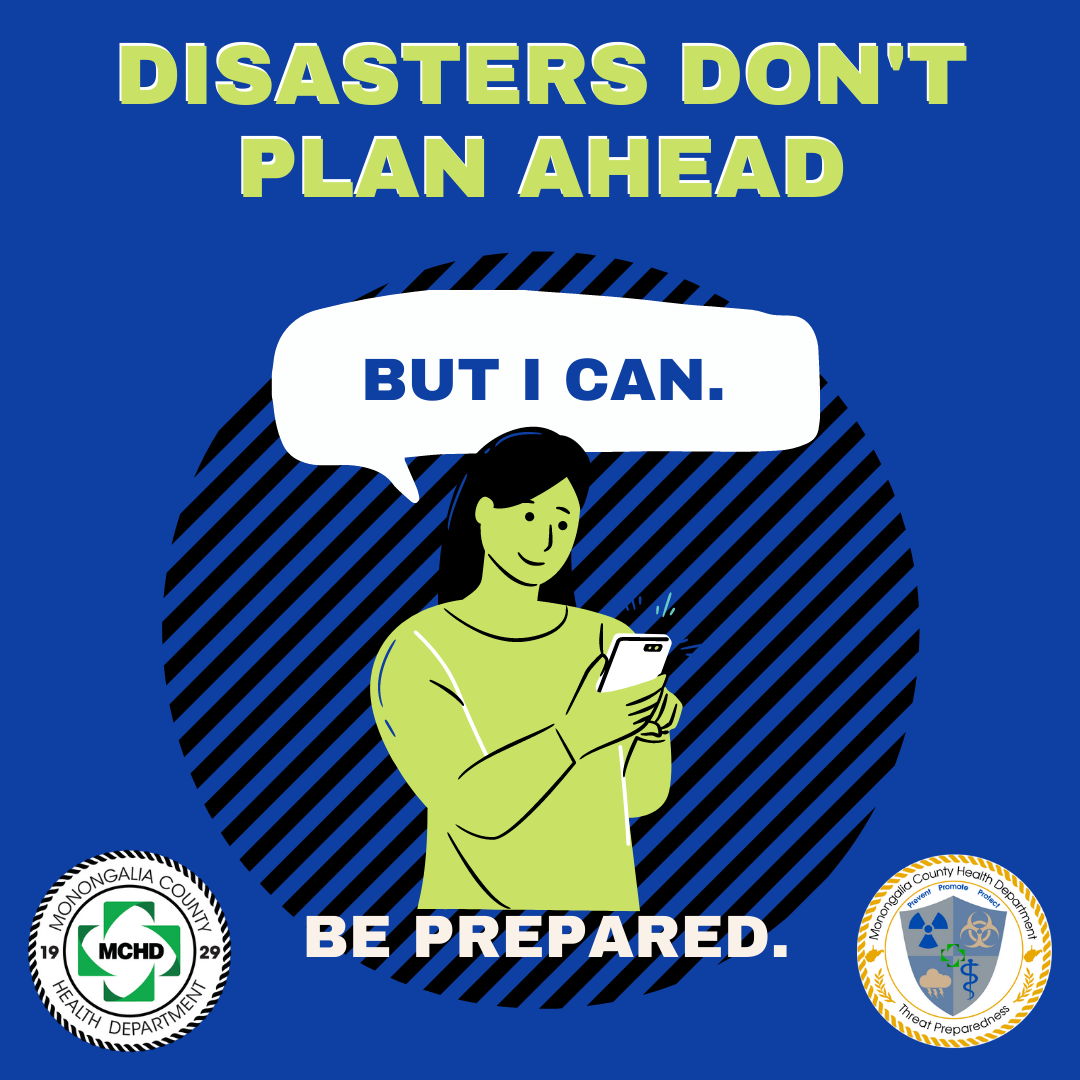Now we really know that preparedness is important

Sep. 8, 2021
By Mary Wade Burnside
In recent Septembers, wildfires continue to rage on the West Coast while hurricanes and category storms make their way up the East Coast.
We begin to think about influenza inoculations and, of course, this year, the COVID-19 vaccine, with the Pfizer brand just receiving full approval for ages 16 and up from the Food & Drug Administration (FDA).
In Monongalia County, this summer has been hotter than ones in recent memory, coupled with periods of torrential downpours that cause flooding.
And, of course, the 20th anniversary of the Sept. 11, 2011 attacks on the World Trade Center and the Pentagon loom.
It’s no wonder that September is National Preparedness Month, which was created in 2004.
I’ve been writing about National Preparedness Month since 2017. Back then, Hurricane Harvey was hitting Houston. The twin threats of Hurricanes Laura and Marco on the Gulf Coast had observers hearkening back to Rita and Katrina, other landmark storms that had calamitous effects on American cities and communities.
I’ve also mentioned the need to create emergency kits to keep in the home for when a situation strikes — even just a power outage — wondering if the advice would be met with eye rolls and ho-hums.
Not anymore.
After the past 18 months, people are very aware that being prepared is a good idea, especially if those emergency kits contain extra toilet paper.
Of course, West Virginia doesn’t get direct hits from hurricanes, but storm aftermaths have caused devastating floods that have sometimes trapped people in their homes and wreaked other havoc. That’s why it’s a good idea to watch the progress of big storms and know whether evacuating your home is necessary. And remember, if you see standing water in the road as you drive, “Turn around. Don’t drown.”
And it’s also why it’s a good idea to discuss preparedness with your family and perhaps even your neighbors.
Ready.gov, the preparedness website created by the Federal Emergency Management Agency (FEMA), provides a great deal of information on how to deal with specific situations, such as wildfires or storms or a pandemic.
And you also might realize that the preparation steps you plan the emergency kits you create can also come in handy for relatively minor incidents.
Ready.gov suggests these steps for making a plan with your family:
• How will you receive emergency alerts and warnings?
• What is your shelter plan?
• What is your evacuation route?
• What is your family communication plan?
• Do you need to update your emergency preparedness kit?
• How do I check with the Centers for Disease Control to update plans with COVID-19 in mind?
Ready.gov/kit specifically provides tips on how to build an emergency kit that can help you weather different situations. These are the basic items that are recommended for an emergency kit:
• Water (one gallon per person per day for several days, for drinking and sanitation)
• Food (at least a three-day supply of non-perishable food)
• Battery-powered or hand crank radio and a NOAA Weather Radio with tone alert
• Flashlight
• First aid kit
• Extra batteries
• Whistle (to signal for help)
• Dust mask (to help filter contaminated air)
• Plastic sheeting and duct tape to shelter in place
• Moist towelettes, garbage bags and plastic ties, for personal sanitation
• Wrench or pliers to turn off utilities
• Manual can opener (for food)
• Local maps
• Cell phone with chargers and a backup battery
And of course, you might want to add toilet paper and extra prescription medications to the list.
Monongalia County Health Department works to keep individuals informed via our Facebook, Twitter and Instagram accounts as well as our website, monchd.org. That would continue during an emergency situation, during which the expectation would be that we would work with local emergency officials to provide continual updates on what is going on and what steps to take.
Maybe you’ve already collected all the items you need or perhaps your pandemic stockpile is a good start. But if you haven’t created an emergency plan and put together a kit yet, now is the time to take preparedness seriously.
Mary Wade Burnside is the public information officer at Monongalia County Health Department.